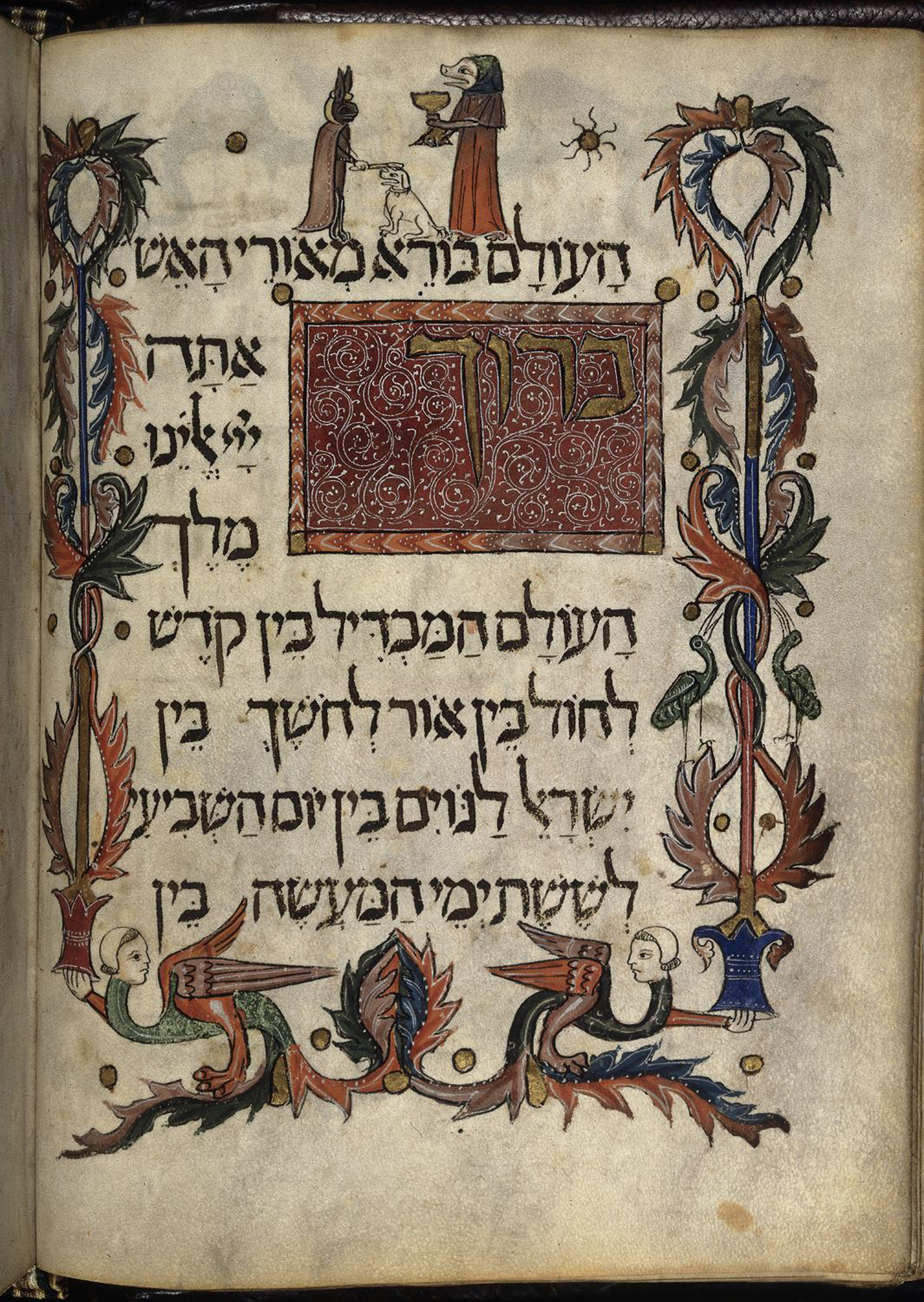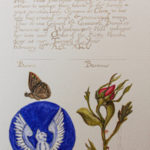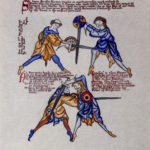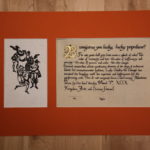Lady Letia Thistelthueyt
Portfolio & Sword Musings
proves mightier than the pen
I study both
"Parva Sed Potens"
Small but Mighty

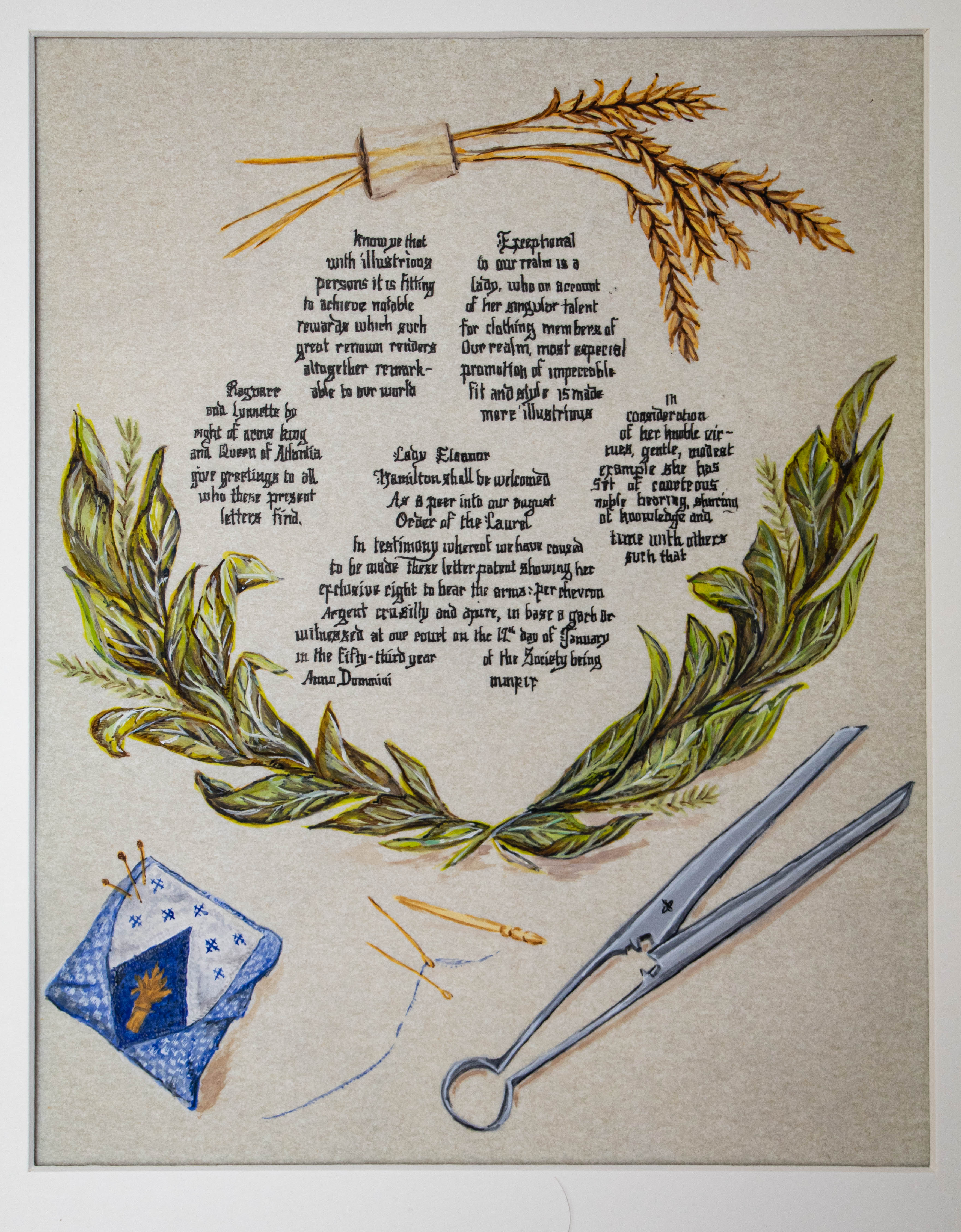
Laurel scroll delivered to Mistress Eleanor Hamilton 1/12/2019
Based on Mira Calligraphiae Monumenta, Late 16th century
16th century
Mira Calligraphiae Monumenta
By far my favorite source to draw inspiration from. This small 6 9/16” × 4 ⅞” 129 page book was originally created by 2 masters of their craft working three decades apart: calligraphy by the renowned hand of Hungarian Georg Bosckay, in 1561-1562 under in Royal commission of Emperor Ferdinand Habsburg and later Flemish painter Joris Hoefnagel add illustrations around 1590, commissioned by Emperor Fredinand’s Grandson Rudolf II. This book exemplifies skills of the time. The calligraphy was done as the printing press was filling utilitarian need for communicating words, allowing the creativity and artistry in calligraphy to be sought out and encouraged. The brilliant use of Trompe L’oeil-To Fool the Eye to make objects appear to sit on the page, some are even painted to look laced through the pages. It illustrates, literally the priorities of the time, especially the naturalist collections that were popularized in the flemish region as new unique discoveries of the natural world were brought through the ports. The Mira Calligraphiae Monumenta is held at the Getty Ms. 20 (86.MV.527)
Please note Mistress Merwenna of Rannowe is the calligrapher for the scroll with the rose & beetle, spider, and frog
15th century
Black Hours
Approximately seven (I have seen several sites source seven remaining, but I am not sure which ones they are counting 1 2) surviving manuscripts from Bruges area dating from the Mid to late 15th century (1455-1480). Black hours are achieved by dying/soaking vellum with iron gall ink (2) or iron-copper (3) solution. The dye is acidic and corrosive which decomposes the vellum, leaving potentially fewer surviving examples. One theory is the black hours were designed during Philip the good’s court, who had a proclivity for black after his father’s assassination in 1419.
fighting scrolls
Fencing Manuals
Many of these works would be made as etchings or woodblocks to be reproduced and paired with typeset. I often choose a hand that mimics typesetting for the later period manuals.
Putting it together
Book Binding
Approximately seven (I have seen several sites source seven remaining, but I am not sure which ones they are counting 1 2) surviving manuscripts from Bruges area dating from the Mid to late 15th century (1455-1480). Black hours are achieved by dying/soaking vellum with iron gall ink (2) or iron-copper (3) solution. The dye is acidic and corrosive which decomposes the vellum, leaving potentially fewer surviving examples. One theory is the black hours were designed during Philip the good’s court, who had a proclivity for black after his father’s assassination in 1419.
Random Projects
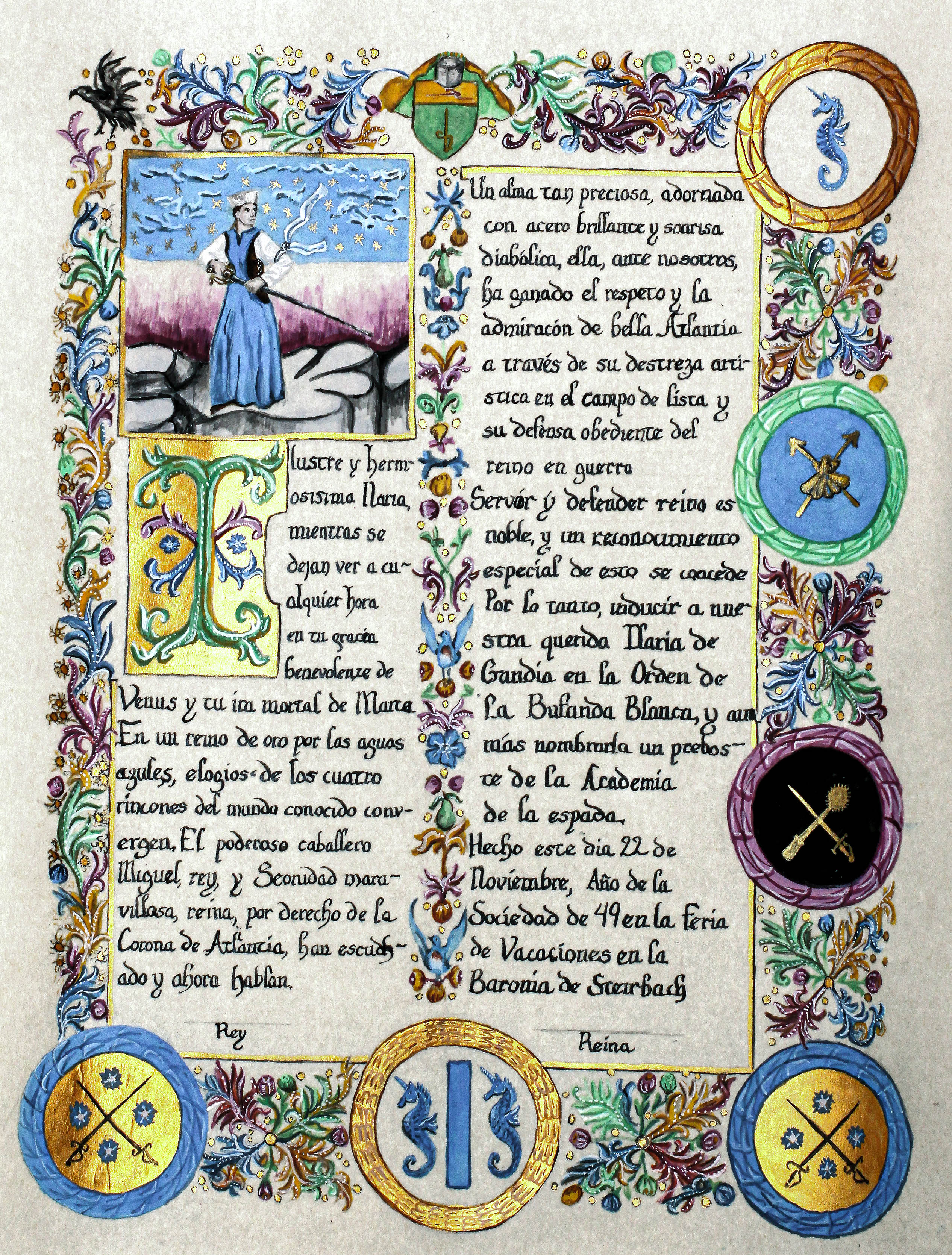

Spanish Calligraphy
Perg, Higgins ink and lucas Gauch
Scroll based on 1465 Catalonian page from the old testament.
British Library
Matching Pearls
Pearl: Lady Marguerite De Lyon 3/24/18
Pearl: Lord Galfrid atte Grene 11/10/18
Created on Pergamenta with period pigments from Guild Miradola.
Colors match, better photos are needed
Inspired by: La Quête du Saint Graal et la Mort d’Arthus, 14th century


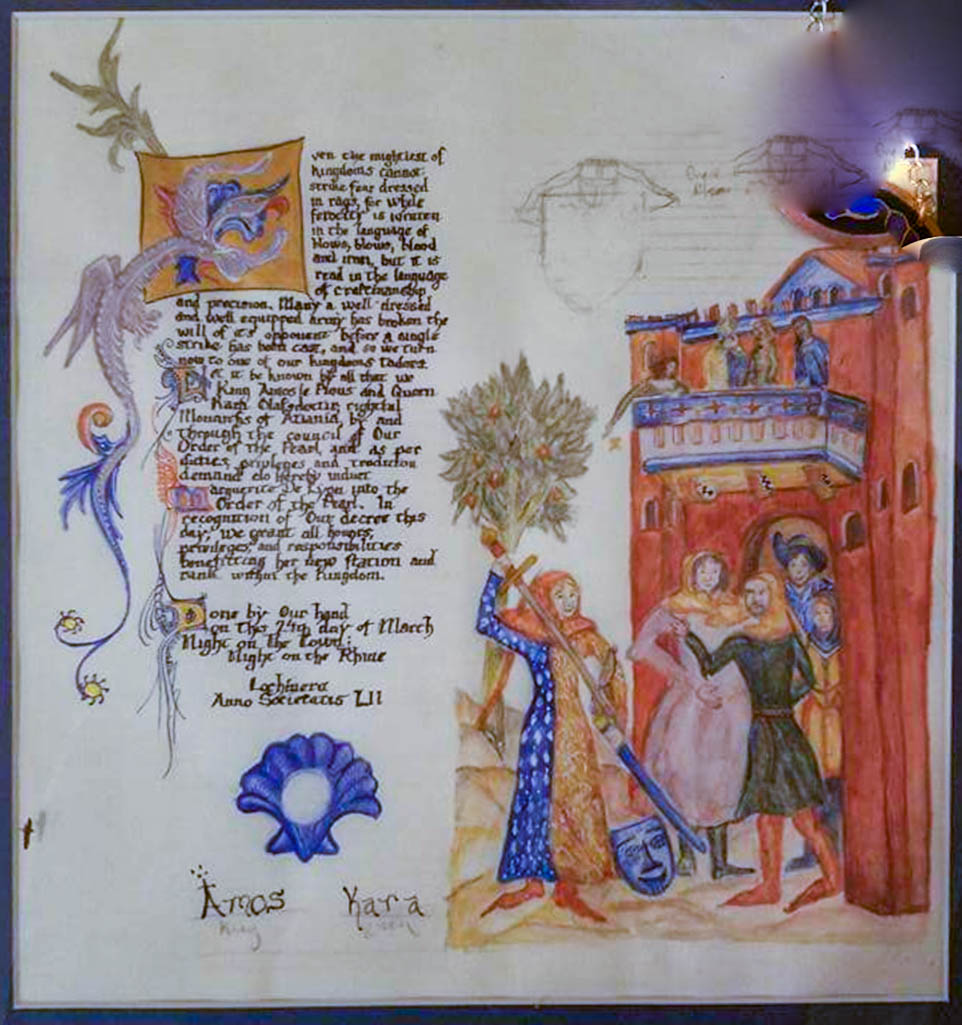


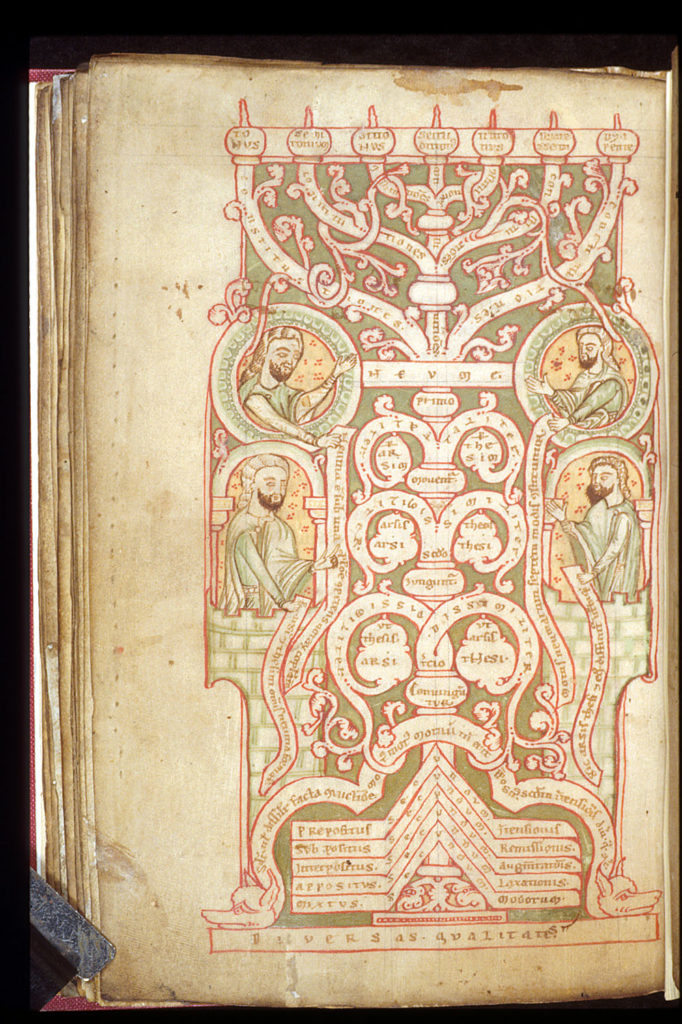
Sea Dragon
Lord Septimus Marius Belisarius
Anonymous Musical treatise [Inc. “Quoniam discretorum industria…”] (ff. 1-39), ‘Versus de neumis’ [Inc. “Eptaphonus, strophicus, punctum…”] (f. 39), Tonary (40-43v).
Germany, 2nd half of the 12th century,
British Library
Golden Dolphin
Based on a scroll from Spain,
N. E., Catalonia (Barcelona)
2nd quarter of the 14th century, c. 1340
Additional 14761 f. 26 Havdalah Brit. Museum

